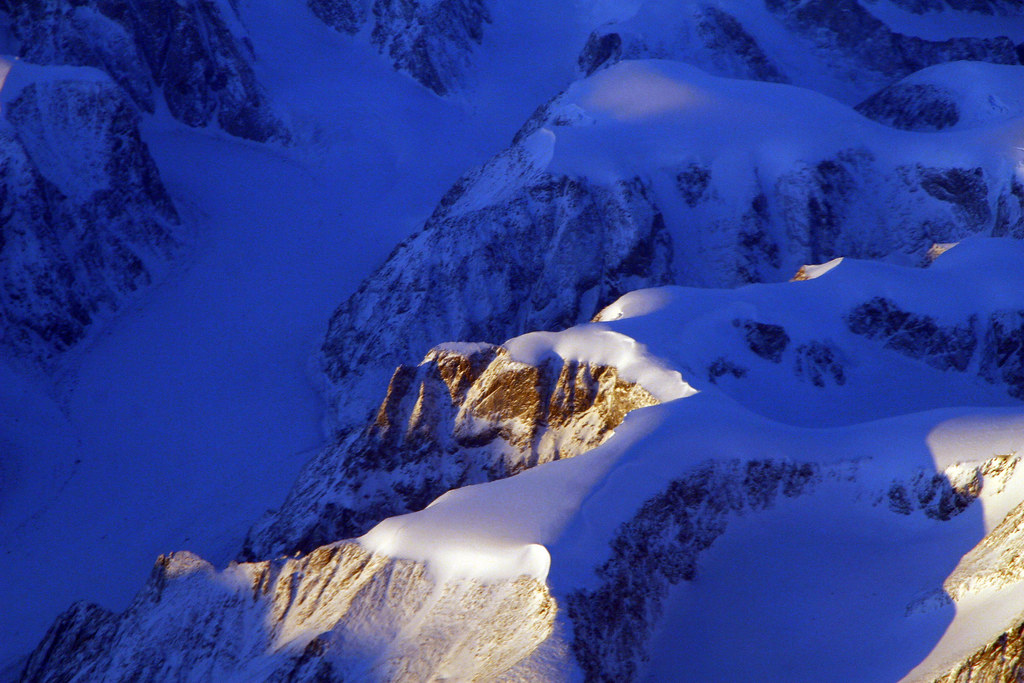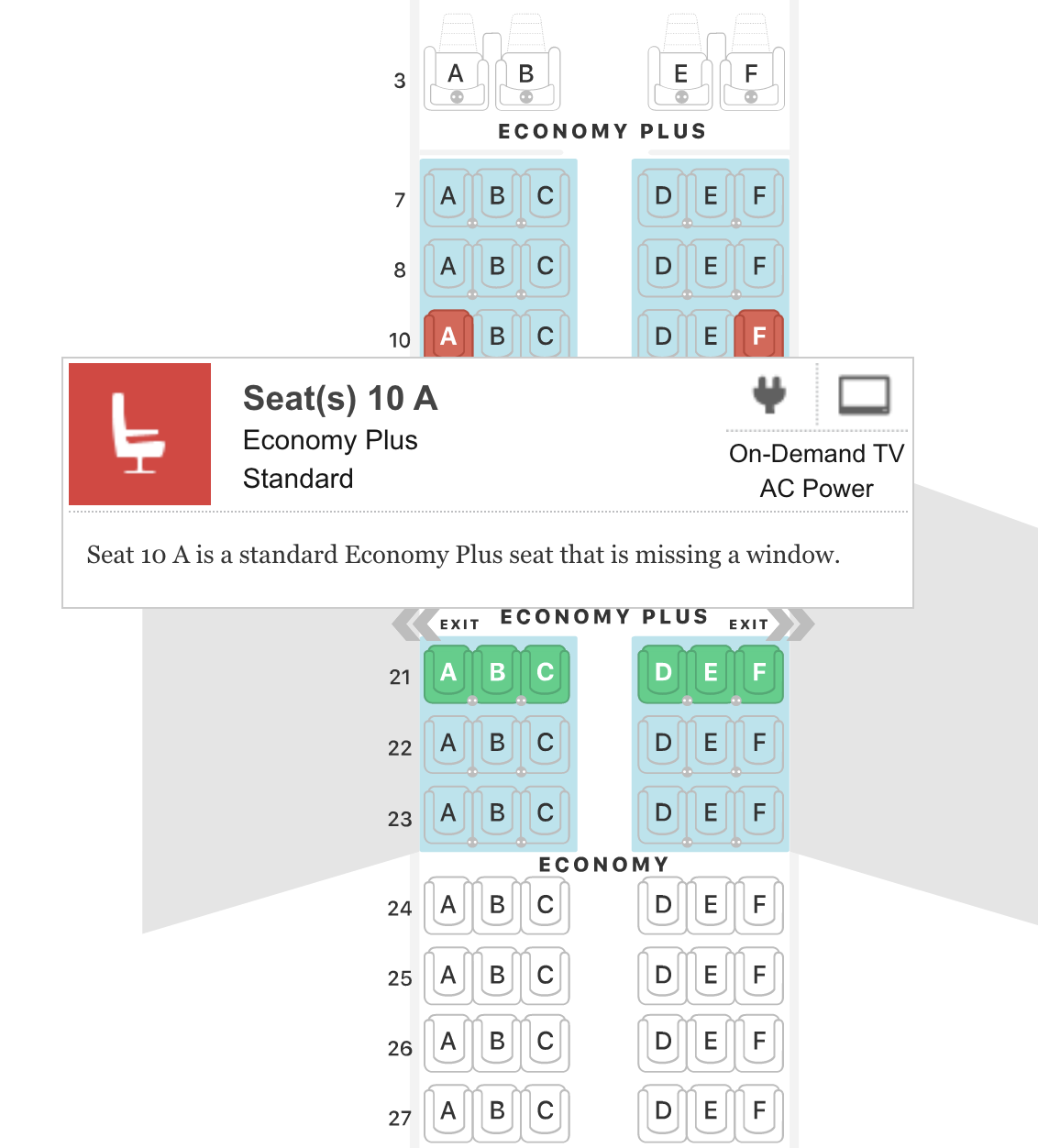A visitor to aerial photos on my Flickr site asked me where one should sit on a passenger plane to shoot pictures like mine. This post expands on what I wrote back to him.
Here’s the main thing: you want a window seat on the side of the plane shaded from the Sun, and away from the wing. Sun on plane windows highlights all the flaws, scratches, and dirt that are typical features of airplane windows. It’s also best to have a clear view of the ground. In front of the wing is also better than behind, because jet engine exhaust at low altitudes distorts the air, causing blur in a photo. (At high altitudes this problem tends to go away.) So, if you are traveling north in the morning, you want a seat on the left side of the plane (where the seat is usually called A). And the reverse if you’re flying south.
Here in North America, when flying west I like to be on the right side, and when flying east I like to be on the left, because the whole continent is far enough north of the Equator for the Sun, at least in the middle hours of the day, to be in the south. (There are exceptions, however, such as early and late in the day in times of year close to the Summer Solstice, when the Sun rises and sets far north of straight east and west.) This photo, of massive snows atop mountains in Canada’s arctic Baffin Island, was shot on a flight from London to Denver, with the sun on the left side of the plane. I was on the right:
As for choosing seats, the variety of variables is extreme. That’s because almost every airline flies different kinds of planes, and even those that fly only one kind of plane may fly many different seat layouts. For example, there are thirteen different variants of the 737 model, across four generations. And, even within one model of plane, there may be three or four different seat layouts, even within one airline. For example, United flies fifteen different widebody jets: four 767s, six 777s, and four 787s, each with a different seat layout. It also flies nineteen narrowbody jets, five regional jets, and seven turboprops, all with different seat layouts as well.
So I always go to SeatGuru.com for a better look at the seat layout for a plane than what United (or any airline) will tell me on their seat selection page when I book a flight online. On the website, you enter the flight number and the date, and SeatGuru will give you the seat layout, with a rating or review for every seat.
This is critical because some planes’ window seats are missing a window, or have a window that is “misaligned,” meaning it faces the side of a seat back, a bulkhead, or some other obstruction. See here:
Some planes have other challenges, such as the electrically dimmable windows on Boeing 787 “Dreamliners.” I wrote about the challenges of those here.
Now, if you find yourself with a seat that’s over the wing and facing the Sun, good photography is still possible, as you see in this shot of this sunset at altitude:

One big advantage of life in our Digital Age is that none of the airlines, far as I know, will hassle you for shooting photos out windows with your phone. That’s because, while in the old days some airlines forbid photography on planes, shooting photos with phones, constantly, is now normative in the extreme, everywhere. (It’s still bad form to shoot airline personnel in planes, though, and you will get hassled for that.)
So, if you’re photographically inclined, have fun.



Leave a Reply